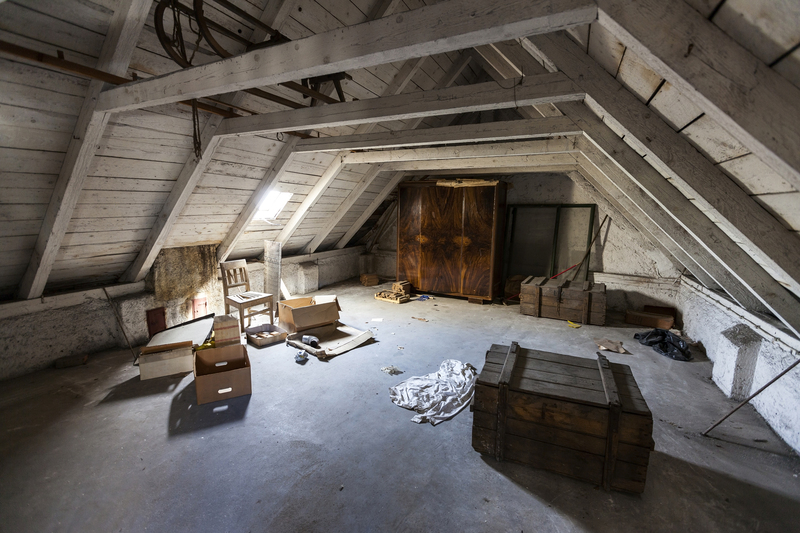Fresh and Clean: Cure for the Damp Smell
Posted on 06/09/2025
Fresh and Clean: The Ultimate Cure for the Damp Smell
Few things are as off-putting as walking into a room and being hit by a stale, damp odor. The lingering scent can make even your cleanest spaces feel uncomfortable and unhygienic. Fortunately, bringing freshness back to your home is easier than you might think. This comprehensive guide will walk you through the most effective cures for the damp smell, including expert tips, tried-and-true methods, and preventative measures to keep your living space feeling clean and inviting.

Understanding the Damp Smell: What Causes It?
Before tackling the damp odor, it's crucial to pinpoint its origin. The infamous damp smell is usually a sign of excess humidity, lack of proper ventilation, or even hidden moisture problems. Here's why it happens:
- Moisture Buildup: Leaky pipes, poor drainage, or wet clothing left indoors can elevate humidity, leading to that musty mildew scent.
- Insufficient Ventilation: Closed spaces without airflow allow moisture to linger, enabling mold and mildew growth.
- Mold and Mildew: These fungi thrive in moist environments and release spores that create a telltale musty aroma.
- Absorptive Materials: Carpets, upholstery, and drywall can trap and retain moisture, amplifying the problem.
Identifying the root cause is the first step in eliminating damp smells from your living environment.
Step-by-Step Guide: How to Remove Damp Smells Effectively
To achieve a fresh and clean atmosphere, follow our step-by-step approach to cure the persistent damp odor in your home:
1. Locate and Address Moisture Sources
Begin your freshening mission by searching for hidden water issues. Inspect all rooms, especially basements, bathrooms, and laundry areas, for any signs of leaks, water stains, or condensation. Pay special attention to:
- Pipes and faucets
- Window sills
- Roof or ceiling spots
- Appliance areas (washing machines, air conditioners, etc.)
Repair any leaks or drips immediately. Consider installing a dehumidifier in trouble spots to keep moisture at bay.
2. Remove the Source of the Odor
Once you've addressed moisture, it's time to handle existing odors. The following actions are powerful cures for damp smells:
- Wash all linens, curtains, and textiles in hot water.
- Shampoo carpets or use a steam cleaner to remove deep-set mold and mildew.
- Wipe hard surfaces with a mixture of white vinegar and water--vinegar is a natural deodorizer and mold killer.
- Dispose of any unsalvageable, mold-infested materials.
Tip: For persistent odors in walls or floors, consult a professional for specialized cleaning or replacement.
3. Improve Air Circulation
Good airflow is essential in banishing musty smells for good:
- Open windows and doors daily to refresh indoor air.
- Use ceiling fans and portable fans to prevent air from stagnating.
- Install or upgrade exhaust fans in bathrooms and kitchens.
4. Use Natural Deodorizers
Nature provides multiple inexpensive tools for keeping your space smelling fresh and clean:
- Baking Soda: Sprinkle on carpets, let sit, and vacuum after a few hours. Baking soda absorbs odors rather than masking them.
- Activated Charcoal: Place small pots of activated charcoal in corners; it draws out and neutralizes moisture and smells.
- Essential Oils: Diffuse oils like lavender, lemon, or eucalyptus for a pleasant, lasting aroma.
- Houseplants: Some, like peace lilies and spider plants, help purify air and reduce humidity.
Comprehensive Solutions for Every Room
Basements and Cellars
- Dehumidifiers: Invest in a high-capacity dehumidifier; basements are particularly prone to high humidity.
- Seal Cracks: Repair foundation cracks to prevent water seepage.
- Store Items Properly: Avoid storing items directly on concrete floors; use shelves for storage bins.
Bathrooms
- Wipe down wet surfaces after use to prevent mold growth.
- Regularly clean tile grout and replace moldy caulk.
- Ventilate! Keep exhaust fans running during and after showers.
Kitchens
- Check under sinks and behind appliances for hidden leaks.
- Store food in airtight containers to prevent mold formation.
- Ensure garbage cans are emptied and cleaned routinely.
Bedrooms and Living Areas
- Launder bedding and curtains often.
- Let mattresses and upholstery "breathe" by airing them outside on dry days.
- Keep closets organized; do not overcrowd to allow air circulation.
Preventing Future Damp Odors
Prevention is always better than cure when it comes to eliminating dampness and keeping your home smelling fresh and clean. Adopting the following habits will help:
- Monitor Humidity: Keep indoor humidity below 60%. Use a hygrometer to track levels.
- Maintain HVAC Systems: Change filters regularly and service systems annually.
- Gutter Maintenance: Clear out gutters to prevent roof leaks.
- Landscaping: Ensure soil slopes away from your home's foundation to prevent basement floods.
- Regular Inspections: Check attics, crawl spaces, and window wells for water intrusion or musty smells.
Safe and Eco-Friendly Damp Smell Solutions
For those preferring eco-friendly and non-toxic remedies, there's a wealth of green options that are both effective and safe for your family:
- Baking soda: As mentioned earlier, it's gentle yet powerful in odor absorption.
- White vinegar: Cuts through odors, kills bacteria, and leaves surfaces clean.
- Lemon juice: Its antibacterial qualities work wonders on musty surfaces and also add a pleasant, clean scent.
- Sunlight: Take advantage of sunny days to air out rugs, cushions, and other textiles -- UV rays naturally sanitize and deodorize.
Advanced Odor Removal Techniques
Sometimes, the persistent nature of dampness requires a more thorough approach. Here are some advanced solutions for stubborn damp smells:- Ozone Generators: Professional ozone treatments can break down odor molecules on a molecular level. This technique is best left to the experts, especially for large or severely affected areas.
- Enzyme Cleaners: Specially formulated to "eat" organic material, enzymes can tackle mold, mildew, and musty odors deep within fabrics or carpets.
- Thermal Fogging: Used by remediation professionals, fogging treatments penetrate porous surfaces and neutralize lingering smells.
When to Call a Professional?
If you've tried every home remedy and the smell persists, there could be a more serious underlying problem, such as black mold or structural dampness. Call a professional if:
- The smell intensifies after cleaning.
- You observe visible mold patches repeatedly.
- There are signs of water damage to walls, ceilings, or floors.
- Allergies or respiratory symptoms worsen.
Expert intervention ensures a safe, thorough, and lasting solution to even the most stubborn damp odor problems.
Frequently Asked Questions: Cure for the Damp Smell
What is the fastest way to cure a damp smell in a room?
Open all windows and doors to maximize ventilation. Use a dehumidifier to draw out moisture, and clean surfaces with white vinegar or baking soda. Place bowls of activated charcoal to absorb odors quickly.
Can air fresheners cure damp odors?
Air fresheners can temporarily mask smells, but they do not resolve the root cause. True freshness comes from eliminating the moisture and cleaning the affected areas thoroughly.
Is it safe to use bleach for mold or damp smell removal?
Bleach can be effective on hard, non-porous surfaces but should be used with caution and never mixed with other cleaners like ammonia. For fabrics, opt for vinegar or enzyme-based solutions to avoid damage and toxic fumes.

Maintaining a Fresh and Clean Home: Long-Term Tips
Now that you have achieved a fresh and clean environment, prevention is key to keeping damp odors at bay:
- Ventilate daily: Even in winter, brief window opening exchanges stale air for fresh.
- Dry washing outside: If possible, dry clothes outdoors or use a vented dryer to prevent adding extra moisture to your home's air.
- Use moisture-absorbing materials: Silica gel packets, calcium chloride containers, or natural clay dehumidifiers work great in closets and drawers.
- Regularly clean rarely used spaces: Guest rooms, storage closets, and attics can develop odors unnoticed. Make a habit of checking and airing them out monthly.
Conclusion: Enjoy a Fresh and Clean Home All Year Round
Banishing a damp smell requires a combination of vigilance, cleaning, and preventative habits. By identifying the sources of moisture and using natural or advanced solutions, you can restore your home's natural freshness and create a healthier, more welcoming space for everyone.
Remember, the cure for the damp smell lies in both tackling the problem at its source and maintaining a consistent routine of cleaning and ventilation. With the tips and expert advice in this comprehensive guide, you can say goodbye to musty odors and hello to a home that smells truly fresh and clean -- every single day!




